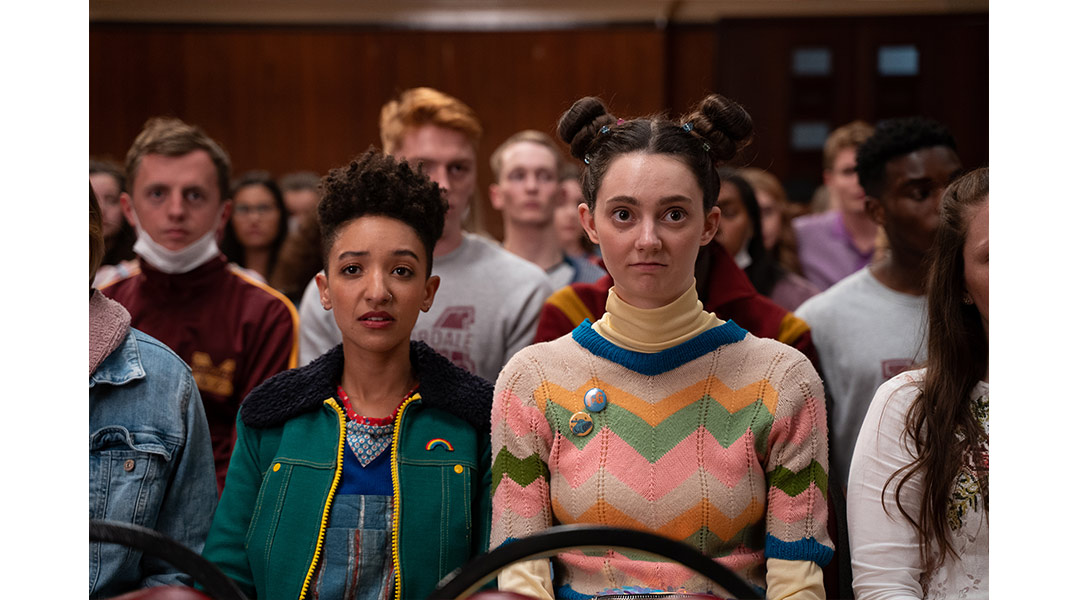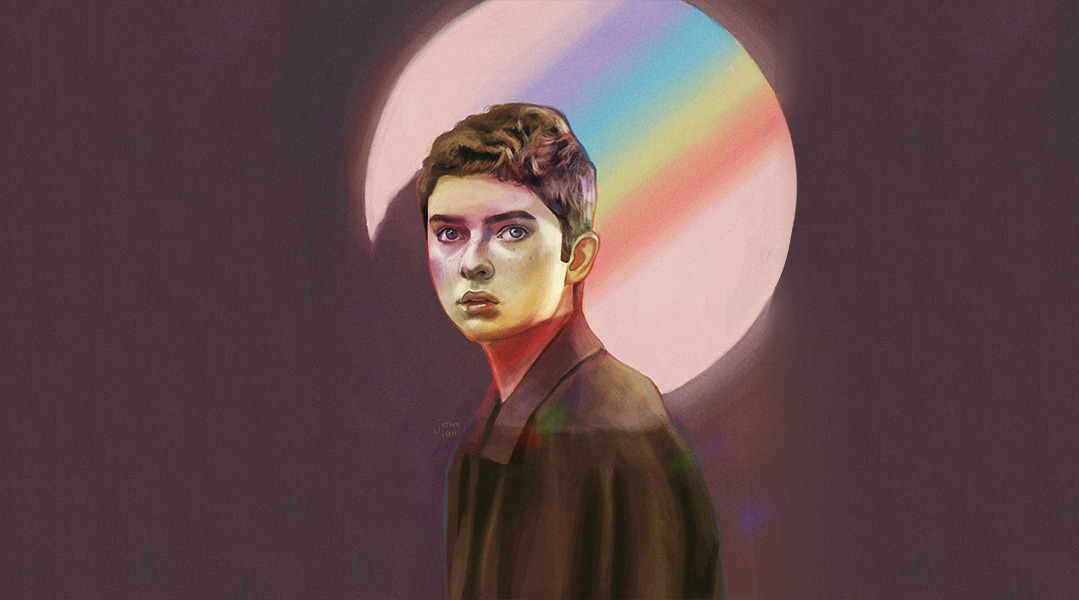In solidarity and celebration of all things pride, Netflix seeks to understand queer experience in film and television consumption in the Philippines, furthering the spotlight on how representation and inclusion is paramount in the stories told and streamed today.
Related:No, J.K. Rowling, Queer Support Isn’t Conditional—How Could You Ruin The Magic Forever?
“When I was young, I never dreamed big, because I never saw anyone who was like me who was successful,” begins photographer BJ Pascual, recounting how he never quite saw someone like him in television and movies back then. Of course, we were living in a different reality, one that stereotyped queer characters as laughing stocks in a drawn out farce, relegated to being requisite foils, and worst, perpetuated as a cautionary tale in a strictly heteronormative status quo. It is almost a little too hard to believe, not only because greater strides have been taken in reclaiming the queer narrative by the LGBTQIA+ community, but for BJ Pascual, who today stands as a paragon of inspiration for the spectrum of youth and adults who look up to him. “Actually, I was in fourth grade, and I did not know if there was a life to being gay aside from the ones I would usually see on TV.”
View this post on Instagram
Now that we are slowly and surely seeing ourselves portrayed as truthfully as possibly can on mainstream entertainment, it is almost heartbreaking to realize that generations weren’t as fortunate from a formative standpoint, and instead looking at it from the lens of nostalgia. “Growing up, it kind of felt like if you like the same gender, it was a joke. In some movies you see some punch lines becoming like, ‘oh, because you’re gay,’” says Marga Bermudez, parlaying into how we were being played out in media. Samantha Lee, a filmmaker furthers, “There was always just the bakla and the tomboy. And if you were bakla, it was this really feminine, man. And if you were a tomboy, it was this hyper masculine butch lesbian. My image of myself and the images that I saw on screen didn’t really align. If I wasn’t those things that I saw on TV, how could I be gay?”
This is predicament of identity is precisely why representation and inclusivity is paramount in the content we consume, whether it is through the traditional cornerstones of entertainment such as film and television, to more modern doses of taking it in through streaming platforms such as Netflix. To better understand the landscape of queer content and perception towards the LGBTQIA+ community in the Philippines, Netflix sought out an undertaking to fully comprehend how the role of shows and films played out in the local market by seeding out a survey conducted to respondents nearing the thousand mark in key cities of Metro Manila, Cebu, and Davao.

From the exercise, it was observed that 71% of Filipino viewers watched shows and films to better understand the world, and 63% reflected that watching content with LGBTQIA+ characters or themes represented helps them better understand, empathize, and interact with the LGBTQIA+ community, creating empathy and acceptance from the viewers. With a selection of shows such as Die Beautiful, Born Beautiful, 13 Reasons Why, Stranger Things, Sex Education, Riverdale, Itaewon Class, A Secret Love, The Umbrella Academy and Romance is a Bonus Book among others, it becomes clear how these fragments of fiction shape the way an audience sees a reality that isn’t necessarily of their own. It is through this osmosis of honesty in entertainment that the general view of gender expands, comprehending that isn’t just black and white, but a rainbow that colors the world beyond the lines of archaic archetypes. Most importantly, it is these stories of LGBTQIA+ pain, struggles, and hurt that give way to a horizon of possibilities of their own volition other than what society has otherwise dictated as gospel truth.
“Akala nila bakla ka lang eh, kasi pag alam nila bakla ka, salot ka, wala kang future, wala kang mararating in life. ‘Yun ang lagi kong naalalang sinasabi ng parents ko,” says beauty queen Kevin Balot. “Simula nung napalabas ‘yung Pose sa Philippines, naka-relate na ‘yung trans community. Kasi akala namin na ‘yung life namin hindi normal, alam mo ‘yun? So, nung lumabas ‘yung Pose, parang ako ‘yun ah.” It might just be a TV show or movie for some, something they press play to while the time away, but for people like us, it is a reflection of our truths and stories that some point, we never thought would be possible to see. “For me, I would reflect my story onto Archie’s character from Hollywood. He knew what he had, he knew what she was proud about. He wanted to share that to the world. He wanted to show his love to the world risking it all, and that’s kind of like what I went through, and what I did for my life,” details Issa Pressman about how she now gets to have that same experience as someone straight who has been properly represented all their life. “Seeing yourself on the big screen, finally represented…that just like really like all poured down on me, I just started crying,” relates BJ Pascual.

People don’t necessarily understand from a fundamental perspective how gratifying and insanely life affirming it is to see you just the way others are. After all, regardless of everything else, we are first and foremost human beings who deserve love, rights, and stories to be told. With the swell of narratives being essayed by queer creators for queer people, we are finally able to exist in a space that is still to this day a point of contention for a lot. “If there’s anything that I would say about the LGBTQIA+ [community], is that you just need to keep on showing, and face expressing ourselves, the more you show people that you’re comfortable with yourself, the more people will feel comfortable,” shares Marga Bermudez. Being included not only means being seen, but it also bridges the struggles to a point of self-acceptance and self-love. “Nung minahal ko ang sarili ko, mas minahal din ako ng mga tao sa paligid ko ko. Sabi nga ni RuPaul sa RuPaul’s Drag Race:’If you can’t love yourself, how in the hell are you going to love somebody else, can I get amen up in here?’” says actor and director, Fifth Solomon.
There is nothing more universal than the feeling of being included, especially for a spirited and loving community who has long been forced to be contented with living on the margins of page, constantly tugging the shirts of the figures people accepted more as like them. Now, with the resistance and revolution sparked by brave pioneers and continued on by tireless queer creatives, the story is made possible for us, finally. We not only get to have pages, but entire books and libraries to our names, where the world can explore what it is to be the human beings we are. “Representation is always important, because media acts as a mirror to society. When you see a reflection and you don’t see yourself in it, it kind of renders invisible,” explains Samantha Lee, reminding us of the power of possibility that media and creation has, to which BJ Pascual perfectly illustrates: “Imagine a young boy, a young gay boy watching Netflix, watching the politician, and thinking to himself. Hey, I can become a president, too, and I can start now, and wouldn’t that be something?”
Wouldn’t that be something indeed.
Featured art by Jethro Ian, courtesy of Netflix PH. For more stories of representation, inclusion, and pride, visit netflix.com/pride.







